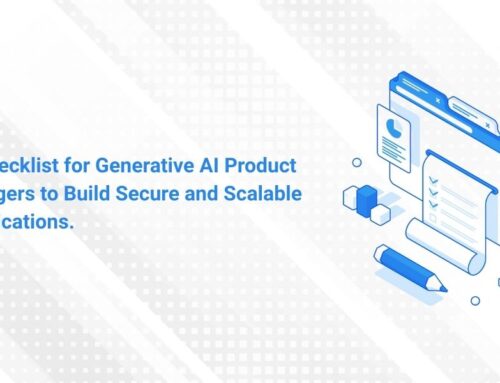The Hidden Cost of Manual Gauge Readings: Explaining the AI Solutions for Manufacturing Industry
For decades, manufacturing has relied on manual gauge readings to monitor critical production variables like temperature, pressure, and machine vibration. These readings, often taken by human workers, are prone to errors, delays, and inconsistencies. This seemingly simple task harbors a hidden cost that can significantly impact on production bottom line.
The Problem: Inaccuracies and Delays in Manual Gauge Readings
Human Error:
Studies show that manual readings can have an error rate of up to 5%, often due to fatigue, distraction, or misinterpretations. This translates to inaccurate data, potentially leading to:
- Production slowdowns due to unnecessary adjustments based on faulty readings.
- Missed defects due to overlooking slight variations outside the acceptable range.
Delays and Inconsistency:
Manual readings are time-consuming, especially during frequent monitoring intervals. This creates delays in identifying and addressing potential issues, impacting production efficiency.
- A 2020 study by McKinsey Digital found that manufacturers lose an average of 2.5% of potential production time due to data collection inefficiencies.
Limited Data Analysis:
Manual data collection makes it difficult to analyze trends and identify subtle patterns that might indicate potential equipment failures or process deviations. This reduces the ability to implement preventative maintenance and optimize production processes proactively.
The Impact: Reduced Productivity, Increased Costs, and Safety Concerns
These issues with manual gauge readings directly translate to:
Reduced Overall Equipment Effectiveness (OEE):
Inaccurate or delayed data leads to suboptimal production processes, unnecessary downtime, and a decrease in OEE, a key metric for manufacturing efficiency.
Increased Quality Control Costs:
Missed defects due to inaccurate readings can result in wasted materials, product recalls, and reputational damage.
- The National Institute of Standards and Technology (NIST) estimates that the annual cost of poor quality in the US manufacturing sector is a staggering $546 billion.
Safety Risks:
In some cases, manually reading gauges involves workers being in potentially hazardous environments, like near high-pressure equipment or confined spaces.
The Solution: AI-powered Gauge Reading Systems for Manufacturers
Implementing AI for gauge reading offers a powerful solution to address these challenges:
Eliminating Human Error:
AI systems are not susceptible to fatigue or misinterpretations, ensuring consistently accurate data collection 24/7.
Real-time Insights and Predictive Maintenance:
AI-powered systems continuously monitor gauges, providing immediate data for faster adjustments and interventions. This also allows for predictive maintenance by identifying potential equipment failures before they occur, minimizing downtime and maintenance costs.
Advanced Data Analysis and Process Optimization:
AI systems analyze vast amounts of data from gauges, identifying trends, predicting potential issues, and suggesting process optimizations based on real-time insights.
Implementing AI for Gauge Reading:
The implementation of AI for gauge reading involves several key steps:
Data Collection:
Equip gauges with sensors or cameras to feed data into the AI system.
While using cameras, implement computer vision algorithms to analyze captured images, extracting relevant data like needle positions on analog dials or digital readouts.
Data Training:
As a next step, train the AI model on the collected large dataset of gauge readings, including both sensor data and images with their corresponding actual values.
For image-based training, the dataset should encompass variations in lighting, angles, and potential obstructions to ensure the model’s accuracy in diverse real-world scenarios.
Model Integration:
Now, integrate the AI model with existing manufacturing systems for real-time data analysis and visualization.
If using computer vision, integrate the model with the camera system for continuous monitoring and data extraction from live feeds.
Continuous Improvement:
As final step, continuously monitor the AI model’s performance on both sensor data and real-time image data.
Retrain the model with new data to improve its accuracy and adaptability to changing conditions or gauge types.
By incorporating computer vision, AI-powered gauge reading systems become even more robust and adaptable, further enhancing its effectiveness in manufacturing processes.
The Benefits: Increased Productivity, Reduced Costs, and Enhanced Safety
By adopting AI for gauge reading, manufacturers can achieve significant improvements:
Increased Productivity:
Real-time data and predictive maintenance capabilities minimize downtime and optimize production processes, leading to increased overall equipment effectiveness (OEE).
Reduced Quality Control Costs:
Early detection of potential issues through real-time data analysis helps prevent defects, minimizing wasted materials and product recalls.
Improved Safety:
Automating gauge reading removes workers from potentially hazardous areas, significantly reducing safety risks.
Conclusion
AI is not a futuristic dream; it’s a practical solution for the real-world problems faced by manufacturers today. By embracing AI for gauge reading, manufacturers can gain a significant competitive edge through increased efficiency, improved quality, reduced costs, and a safer work environment.









